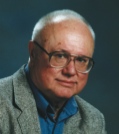
No single basket wins the game: The evolution of anti-lock braking systems was a group effort
October 12, 2009
By
Dick Morley
 Most inventions stand on the innovations of the past. They aren’t usually solo efforts — they require group participation.
Most inventions stand on the innovations of the past. They aren’t usually solo efforts — they require group participation.
For example, Edison — the electric-light guy — had a large, talented staff. Together they discovered “1,000 ways not to make an electric light.” Who was the “true” inventor of the electric light? Arguments abound. We seem to think the last point made in a basketball game wins the game. We make the player who made the shot a hero when it is all the players, coaches, owners and fans who are the heroes. Electricity (understandably critical to Edison’s work) was discovered in ancient times. Faraday made motion with it, and Maxwell wrote it up.
Now let’s look at the string that evolved the ABS (anti-lock braking systems) available on modern vehicles. Anti-lock was first developed for airplanes. Development was slow from 1930 to the late ’50s. Experiments indicated that stopping distances could be reduced by maintaining the wheel’s speed at 85 percent of the actual vehicle speed. If the wheel rotates at the nominal vehicle speed, no net forces are developed. KISS philosophy suggested designs shouldn’t let the wheels slip (zero rotation) or develop no net force when the brake pedal is depressed. The early system looked at a rotation sensor. If the RPM were too low, the sensor would release the brakes; too high and it would apply the brakes. That’s where the thump-thump comes from. No locked wheels allowed.
The next design stage looked at the rotating difference between rear wheels. Issues of reliability, hard real-time systems, environment, availability and cost all plagued the engineers. The results were called computer-controlled systems. No single-chip computers could be used in the ’60s. The 4040 and 8080 microcomputers were not on the street until the early ’70s.
Bedford Associates Inc., a contract engineering company in Bedford, Mass., was contacted by Kelsey-Hayes in the mid-’60s to help design the electronics. Bedford was started by George Schwenk and me in 1964 to capture the illusion of freedom. We ended up doing custom control designs for anybody who walked in the door. A good friend of mine from the design firm working with Kelsey-Hayes, a key power train suppler to Ford, walked through the door. In the late ’50s, Kelsey-Hayes embarked on using earlier technology to develop an anti-lock breaking system. They had a problem with sensors and circuit boards. We were chosen as a consultant for the boards. The assignment: develop a logic board that would read sensor information and control braking to prevent wheel lock. All for the Lincoln automobile.
We had the usual issues. Some stick in my mind. To run the board, we had to use too much current. Ford calculations indicated that the micro-switch contact on the human side would not last for 100,000 miles.
“Well,” I said, “we’ll just put in better semiconductors.”
“No way!” the Detroit guys screamed. “It will increase the cost by a penny.”
I forget whether Kelsey-Hayes worked on the switch or swallowed the costs. Our engineers had to learn to operate ’scopes in the back seat of a smoking Lincoln. It was a fun project.
While researching this column, I scoured the Internet for the history of Kelsey-Hayes using Wikipedia and Google. Kelsey-Hayes had little mention on Wikipedia and a lot on Google, and yet the time lines were identical. A Kelsey-Hayes history site states that Hayes started the development of ABS in 1958 and it became a mainstay of their business for years. They became a major supplier to braking systems in the U.S. Today, Kelsey-Hayes is no longer an independent entity. Oh, well.
In the last decade, I had a good meeting with the engineer who worked on the Ford side of the project. He said rear-end collisions dropped with ABS use. After 15 years, the fender-bender rate was back to the pre ABS rates. How do we know?
What can we learn from this?
• The time for an engineering invention to mature is about 20 years.
• No single basket shot wins the game.
• If I remember correctly, we, at Bedford Associates, did not pursue the intellectual property rights issue with Kelsey-Hayes. After all, we were only a link in the chain of product maturity.
• Persistence pays off.
• Any change will modify behavior (plus or minus) but tends to settle on risk rations.
• Talented people can help.
• In control systems, nothing is ever “right.” We should be careful. Marketing people think it’s ready before it is, and engineers never think it’s ready.
• Keep it simple, design for performance (for the user, not us), and be careful of feature creep.
Dick Morley is the inventor of the PLC, an author, speaker, automation industry maverick and a self-proclaimed ubergeek. His latest book, Techshock Caution: Future Under Repair, is now available. E-mail him at morley@barn.org.
Advertisement
- Understanding Vision seminars hit Ontario, Quebec
- ISA replaces annual expo with new knowledge-based event